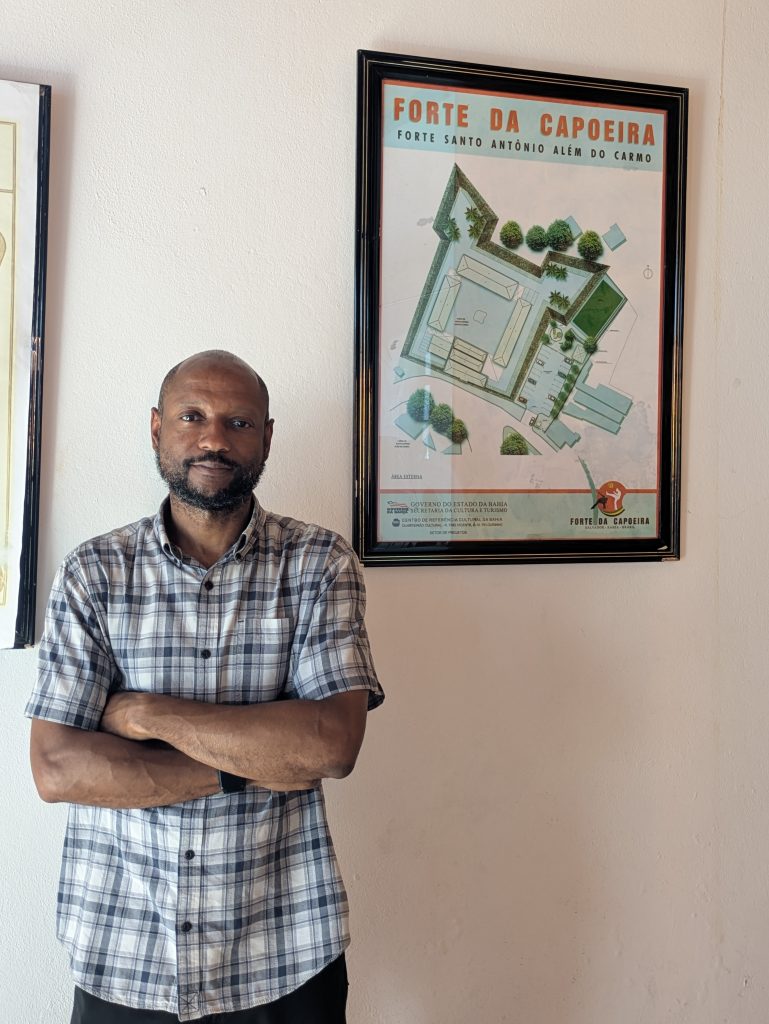My first Capoeira teacher, Tebogo Schultz, once said to me that when practicing and seeking to understand Capoeira, that “You have do Capoeira for its own sake.” I think about this from time to time as learning Capoeira is a lot like learning a language, particularly one that has its own indigenous script. You must learn the script, you must learn vocabulary, you must learn grammar, you must find contexts to apply this knowledge, and you must understand the ontological dynamics of this linguistic system.
This is a lot like Capoiera which consists of a technical repertoire of physical movements, a kinesthetic philosophy which underlie all of this, various contexts of application, songs and instrumentation, a historical narrative, in addition to a rich body of epistemic and ontological knowledge which seek to explicate the “magic” of the art. The art conveys all of this knowledge, in many instances multiple things concurrently. These layers become fuller once decoupled, unpacked, reflected upon, or revisited much in the same way that learning mdw nTr (Medew Netcher), the language of ancient kmt (Kemet) or Egypt illuminates deeper insights upon further reflection and with deeper study.
I first began learning mdw nTr thirteen years ago and continue to study this language. My continued study has been rewarded in kind with richer insights and a deeper appreciation for this language and the cultural and historical contexts out of which it emerges. Much like my study of Capoeira, it has made everything richer via its contribution to my intellectual growth. Admittedly my focus has vacillated between the general and the specific. Some times I have focused on personal pronouns (mdw nTr has three classes of pronouns). At other times I have sought to memorize the many bi-literals (these are symbols that represent two consonant sounds). On other occasions I have worked on transliterating and translating texts, rich exercise whose frustration inevitably enables growth. One of the most exciting realms of study has been my efforts to integrate the language into my life. The point is that mdw nTr is, in its totality, too vast to approach for the sake of achieving narrow ends. One must simply plunge into its depths, buoyed by the intellectual rewards that it promises.
My Capoeira journey began a decade ago with the goal of learning Capoeria as a combat art. This was and remans necessary, but Capoeria is many things at once. Like Xing Yi Capoeira can serve as a gateway to a more fully integrated self. Like Muay Thai, Capoeira is a tool for physical conditioning. Like Choy Lay Fut Capoeira can be a highly effective fighting art. Like Yoga, Capoeira can build the suppleness of the body. Capoeira is not one thing. It is many things. And like studying mdw nTr, one must plunge fully into its depths, swimming through the waters of renewal, becoming water oneself.
When my daughters go to bed and wake up in the morning we speak mdw nTr to each other. These acts, though short in duration are complex in their layers. When my children and I train Capoeria together, or when I teach a class, these occasions are also multilayered. These knowledges become a part of an integrative toolset, a collection of resources firmly embedded in one’s being. They augment you. I say the mdw nTr and see the words in my mind. I stumble, but never fall because Capoeria teaches you to find balance in the midst of adversity. I find myself translating my thoughts into Kiswahili and mdw nTr as an exercise in multilingualism. I juxtapose defensive tactics for specific attacks between Wing Chun, Choy Lay Fut, and Capoeira. I find innovative ways to use the languages that I study. Capoeira has become central to the curriculum of a rites-of-passage program that I help coordinate, and thus a tool that we are using to build men.
Again these tools, once fully integrated, augment one’s humanity, enabling us to become, day-by-day, a greater expression of our highest selves. This is what it means to “…do Capoeira for its own sake.”
